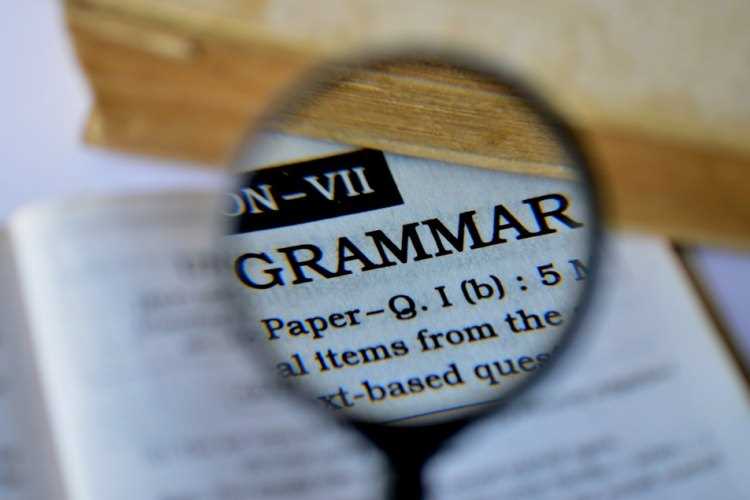English is a language full of tenses and verbs, the simple present tense is one of those and probably one of the most used ones. This verb tense is used in our daily lives. Some of the most common uses of simple present tense are to talk about any habitual action, daily events, something that happens often, general truths etc.
Simple present tenses are constructed according to the person (first person, second person or third person) by adding s/es at the ending.
Proper Uses of Simple Present Tense in English
Because tenses are the tricky part of grammar, now is the best time to learn about them! We’ll show you how to use tenses to describe actions that are currently taking place. Don’t be concerned. You are an astute individual. We have faith in you.
The words in the previous few sentences all have one thing in common: they’re all in the present simple tense. Let us live in the present moment and learn more about what is going on.
Also Read: Trick to be Fluent in English: Why is Fluency so Important?
Types of Tenses
English has surpassed all other languages as the world’s primary means of communication. Every day, millions of people use it to communicate with coworkers, friends, bosses, and others. You should know English if you want to be a part of that global conversation, and knowing English means knowing the tenses in English!
Past Tense
- Simple past: This form is used to describe an event or action that occurred in the past. For instance, I could study or eat.
- Past continuous: This is used to describe an ongoing event or action in the past. I was, for example, studying or eating.
- Past perfect: It refers to something that happened in the past. I had, for example, eaten or studied.
- Past perfect continuous: It describes a past action that started before another past action started or interrupted the first. For example, I could have been studying or eating.
Present Tense
- Simple: It’s used to describe something that’s happening right now, like an action, an event, or a condition. For instance, I can study or eat.
- Continuous: It is used to describe an ongoing or ongoing action. For example, I could be studying or eating.
- Perfect: This denotes a past action that continues into the present. For instance, I have studied or eaten.
- Perfect Continuous: This is used to describe an action that has been ongoing for a long time. For instance, I may have been studying or eating.
Future Tense
- Simple future: When we intend to do something, we use this tense. For instance, I will either study or eat.
- Future continuous: This describes a future action that will continue. In a nutshell, it refers to an action that will take place in the future. For example, I will eat at 8:00 a.m. or study at 7:00 p.m.
- Future perfect: It refers to something that will happen in the future before something else happens. For example, I will study before 6 p.m. or eaten before 7 p.m.
- Future perfect continuous: This denotes a continuous action that will be completed at a future date. For example, I might have been studying or eating at the time.
What is Simple Present Tense?
Understanding the origins of words will aid you in remembering why they are significant. You can remember the value of a verb tense by remembering that it comes from the Latin word tempus, which means “time.” You’ll be able to quickly understand how to communicate about different events in time using the English verb tense lists below.
The simple present is the base of the verb. It is the most common verb when it comes to storytelling. If you are still not clear with what is simple present tense then here is the answer – it is the same verb that you use to talk about continuously or regularly happening things in the present life, for example – I go to college, she goes to college.
Also Read: Pronunciations You Should Avoid: Tips to Work on English Pronunciation
Importance of Tenses
It’s important to remember that English is a chronological language. English speakers simply need to know when a specific action or event occurred.
English speakers use verb tenses to express chronology or the order in which events and dates occur. Each tense denotes a link between two or more time periods or the precise time of an event, emphasising the significance of English grammar tenses. They can be used to assist the listener in comprehending the meaning of your story and create multiple meanings from the same verbs.
As a result, English has a large number of verb tenses, some of which express a connection between two time periods and others which indicate the precise timing of an activity. Furthermore, the breadth of English tenses should never be overlooked.
Simple Present Tense Examples
Any action in the present times that is normal or regular and true, can be described using this verb tense.
Examples that Talks about Facts
Elephants have tails.
The lion is the king of the jungle.
We live in India.
These are examples of things that are factual.
Repeated Action Sentences
He takes the bus to college.
I eat breakfast at 8 A.M sharp.
You read at night.
These examples talk about the daily activities which take place on a regular basis.
Examples for Habit
He bites nail.
I bathe twice a day.
They drink milk every morning.
This usage of the verb tense indicates the habit of the person.
Also Read: The Formula of Present Perfect Continuous Tense: Facts and Rules to Know
Uses in Generally True Sentences
The sun rises in the east.
Ice cream is cold.
Sugar is sweet.
These facts are never changing. The simple present tense is used for describing these types of sentences.
Simple Present Continuous Example
We go jogging every morning.
They swim every day.
Simple present tense in these types of sentences indicates a continuously happening activity.
Simple Present in Negative Sentences
We don’t eat meat.
I am not going to the party.
He doesn’t swim.
They don’t speak English.
In these sentences, the verb tense is used for talking about negative actions.
Simple Present Example in Questions
Do you eat meat?
Does he swim?
Don’t you go to college?
Simple tenses are used in this way for constructing questions in English.
Comparison with Other Tenses
It is a very common tendency in people to confuse the simple present tense with the present continuous tense.
Uses of the simple present include the actions or situations that are regularly done or performed. While present continuous tense is used where some action is taking place at this very moment.
Simple present tense example – John eats a mango every day. This signifies that John has a habit of eating mango, thus simple present tense is used.
Present continuous tense example – John is eating a mango. This sentence tells that John at the very right moment is eating the mango.
Strategies to Improve Tenses
Strategy 1
The first step is to learn the rules for constructing tenses.
Do not attempt to learn all of the rules at once! Divide it into three parts: present, past, and future. Take each one at a time, moving on only when you’re confident you’ve grasped the first.
Keep an eye out for patterns. For example,’verb + ing’ appears in the present, past, and future continuous forms – remember this and you’ll never forget it!
To learn the rules, use examples. Prepare 2-3 example sentences for each tense type and memorise them. Keep them in mind whenever you need to recall the rules!
Find out about the exceptions. Certain verbs do not follow the same rules as others. Pay attention to these in particular! ‘To be,’ for example.
Also Read: Simple Past Tense Errors: Here’s Your Guide to Correct English Grammar
Strategy 2
It is critical to put the rules into practice as you learn them. Consider various scenarios and write as many sentences as you can for each tense. Keep an eye out for the exceptions!
Exposure is crucial for anything you want to improve in English. Read books, watch good movies or TV shows, and read English-language news – anything that will help you gain more exposure. Correct pronunciation and writing will become second nature to you in no time.
Tips for Non-English Speakers
Tenses and the chronological order of events and actions are less important in some languages. Instead, they emphasise the relationships between the people involved in the actions and events that the narrator/speaker is describing. Japanese is an example of a language that places a greater emphasis on interpersonal relationships.
As a result, English learners who speak Japanese as their first language should pay special attention to the tenses in English and use visualisation aids to help them move English tenses from the rather abstract realm of textbooks and materials to a much more understandable and tangible medium.
Take a wooden box, for example, and imagine that the past tenses must be placed inside to represent how they describe events and actions that began and ended in the past. This method is effective for both tactile and visual learners.
Conclusion
The simple present tense is simply used in a sentence to signify something that is regular or factual or a habit. The use of this verb tense modifies according to the person.
So that now you are clear with the uses of the simple present tense, why don’t you comment and share some examples with us?
Also Read: How to Learn English Through Movies? How to Learn English Quickly?






